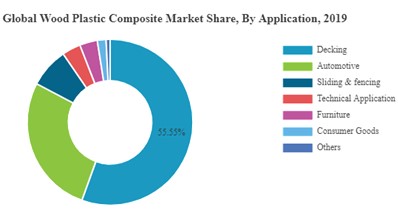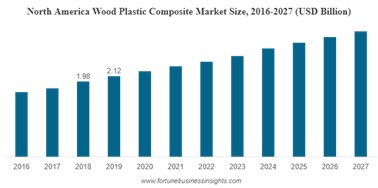“Aestheconomic product in true sense considering all the aspects”
The opening statement endorsed by one of the key PathFrame clients, operating out of Ahmedabad, aptly sums up the true value and aesthetic appeal that comes naturally with the Wood Polymer Composites (WPC) door frames and door solutions. It’s not just a statement, but rather a testament to what PathFrame offers to WPC offers to all its valued clients. As the WPC-based solutions facilitator, PathFrame (headquartered in Ahmedabad – a UNESCO World Heritage City) has successfully delivered three real estate projects to the Anaya Infrastructure. And a couple of ongoing projects are waiting to be installed with WPC frame & door solutions from PathFrame.
WPC Explained
The widespread use of wood and wooden materials for various purposes put our environment in great danger as it led to deforestation harming ecological balance and human sustenance. Governments across the world are trying to minimize the use of wood so as to safeguard the environment and ecology from further degradation. And the WPC-based solutions perfectly fit the billing as they can be the perfect replacement for the woods. And if the global market growth measured in the last four decades is to be considered then the WPCs can be the appropriate alternative to the woods in near future.
According to a recent study by a leading market research firm Mordor Intelligence, the global WPCs market is likely to register a Compound Average Growth Rate (CAGR) of 5 per cent on a year-on-year basis from 2022 to 2027. And the Building & Construction sectors are going to be the biggest market for WPCs. Another study by Allied Market Research, the global WPCs market set to register a CAGR of over 12 per cent. The overall market value was estimated at $2,551 million in 2016 is likely to hit $6,584 million by 2023.
The WPC is a wood and polymer composite composed of a major chunk of green virgin polymer granules mixed with wooden or saw-dust. The composites are so formed and offer higher flexibility to the material with respect to shape, colour and texture. Furthermore, reduction in need of a higher amount of material can be obtained through engineering of special shapes. The ratio of wood, plastic, and additives in WPC depends on the manufacturing process and desired properties of the end product. The WPC commercial products are increasingly replacing several products in various structural applications, especially in the construction sector.
Read More : WPC Hollow Frames not just any frame, it’s Future of Frames
WPC-Based Solutions

The WPC-based solutions have not only been accepted widely and with open arms by one and all but also because of the various factors – like assurance of safety, sense of quality, aesthetic appeal, precision customization, value addition, etc. — associated with it. Moreover, what goes most in the favour of the WPC-based frame and door solution is the processing method of the WPC solutions. These methods make the WPCs to be formed into almost any shape and thus are used for a wide variety of applications, such as windows, door frames, interior panels in cars, railings, fences, landscaping timbers, cladding and siding, park benches, moulding and furniture.
Furthermore, the WPC-based door frames and doors are, practically, free of all the issues associated with the traditional wood-based frames and doors. Besides, it has a very long self-life, which is like installing once and forgetting about any issue or service thereafter. And that makes it a perfect alternative to wood and thereby it can be the best suited for installing it in your personal and professional spaces like kitchen, living area, bedroom, washrooms, offices and farmhouse as well.
WPC’s Market Positions
According to Fortune Business Insights (FBI) — an end-to-end solutions and flagship research technologies company based in Maharashtra — in the year 2019, the global WPCs market size was pegged at $4.77 billion and the same is projected to touch $9.03 billion by 2027 with a CAGR of 8.57 per cent. Looking at the WPCs market growth and CAGR on a year-on-year basis, the global market is looking at these solutions in a big way. And WPC solutions being environment-friendly as well as one-time investment, set to be the future market leader and, perhaps, the only perfect alternative to wood.
Global Market
The entire global market is divided into five major categories based on geography. And they are:
- North America: US and Canada
- Europe: Germany, France, UK, Spain, Australia, Switzerland and Rest of Europe
- Asia Pacific: China, India, Japan, South Korea and Rest of Asia Pacific
- Middle East and Africa: South Africa, GCC, Rest of Middle East and Africa and
- Latin America: Brazil, Mexico and Rest of Latin America

According to the FBI research, North America has registered a steady year-on-year growth trend since 2016 and seems to tread the path for sustained growth (as indicated by the study) till 2027. The same is reflected in the FBI’s graphical representation.
According to the report, North America has dominated the WPCs market with a share of more than 35% in 2019, which stands at $2.12 billion in 2019. However, the North America WPC market was followed closely by the WPC markets in the Asia Pacific and Europe.
Moreover, as per the US Census Bureau, in February 2020 total construction was pegged at 1,366,697 units which are 6 per cent above February 2019 numbers. Besides, the various government policies and Foreign Direct Investment (FDI) has boosted the building and construction activities which act as growth drivers for the WPCs market in the foreseeable future.
When it comes to the Indian market, the segment has captured the people’s imagination which is reflected in the double-digit annual growth in the last 10 years. According to market research, the WPC market segment registered a growth of 12.2 per cent to $4,601.7 million from $2579.90 million in 2018. The CAGR of 12.2 per cent is anticipated to remain for at least another 5 to 7 years.
